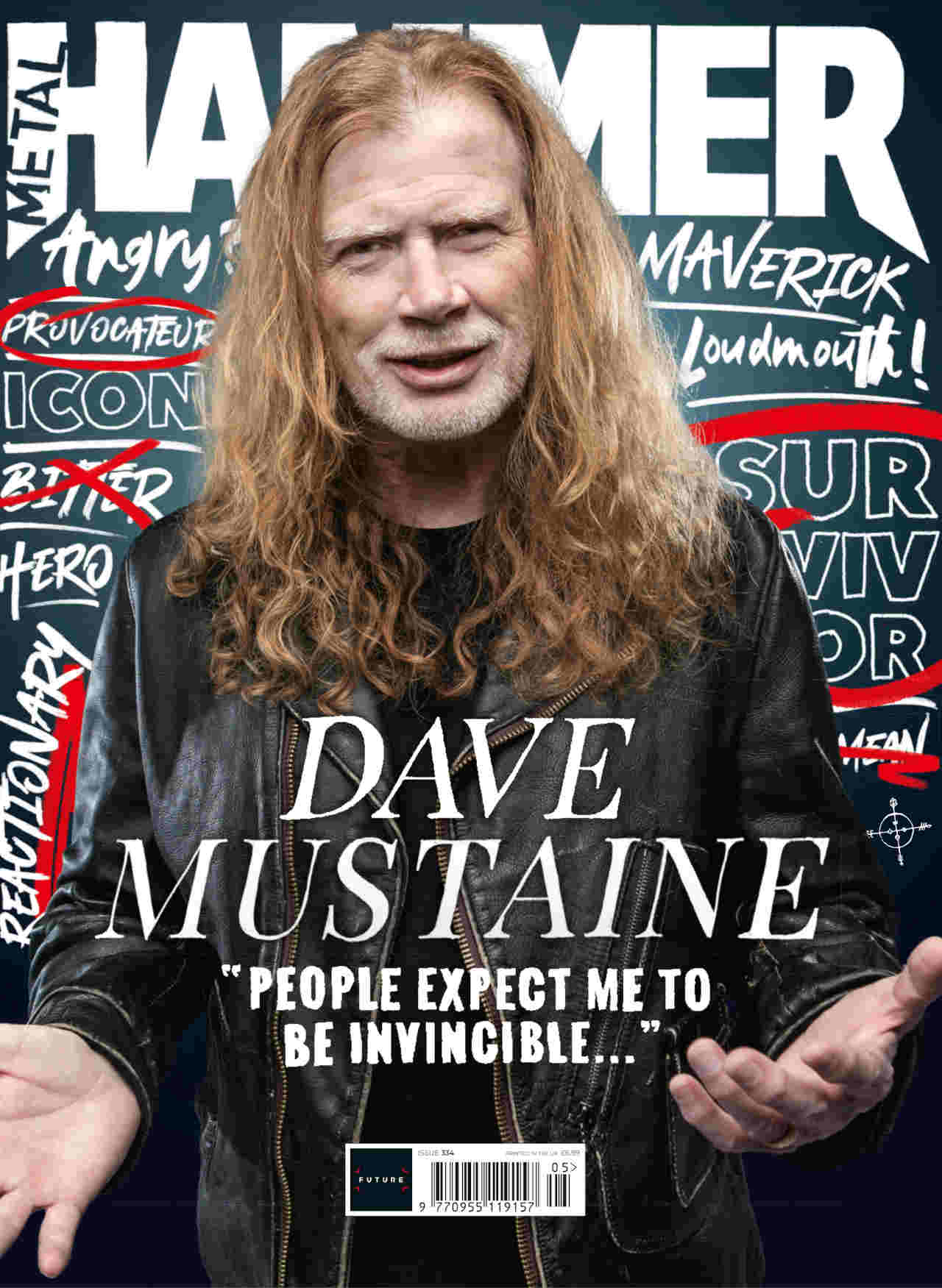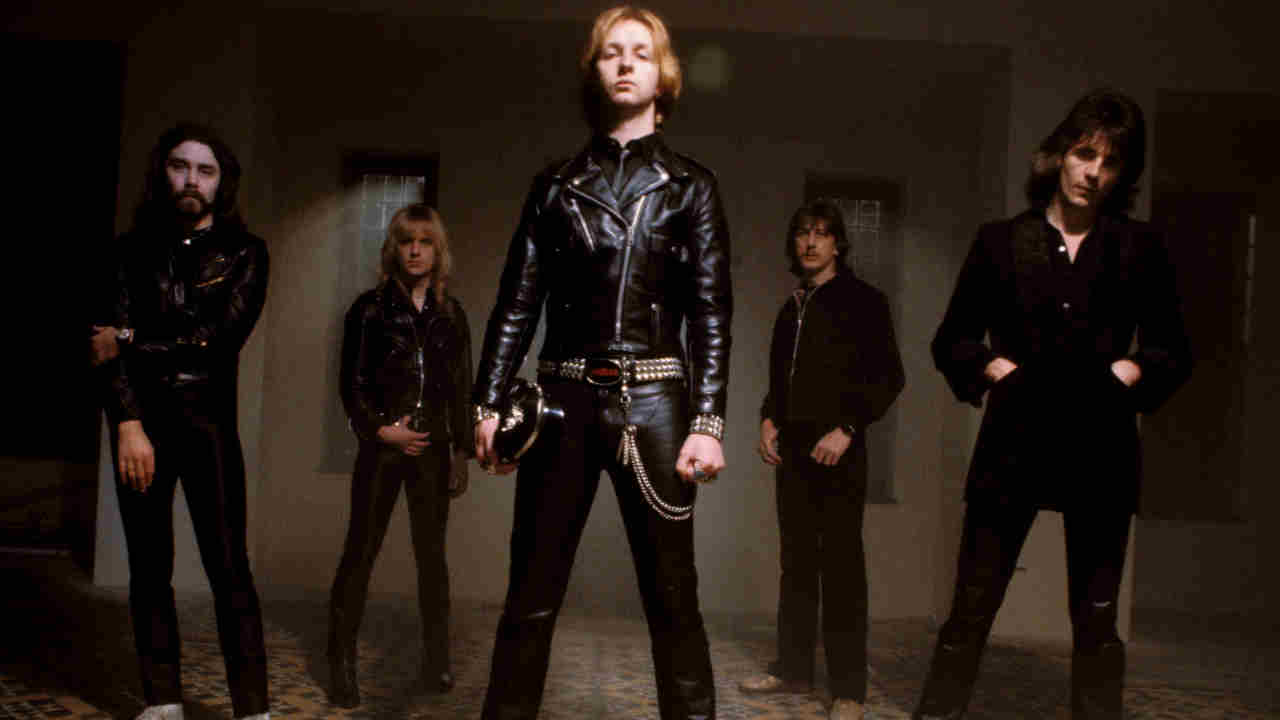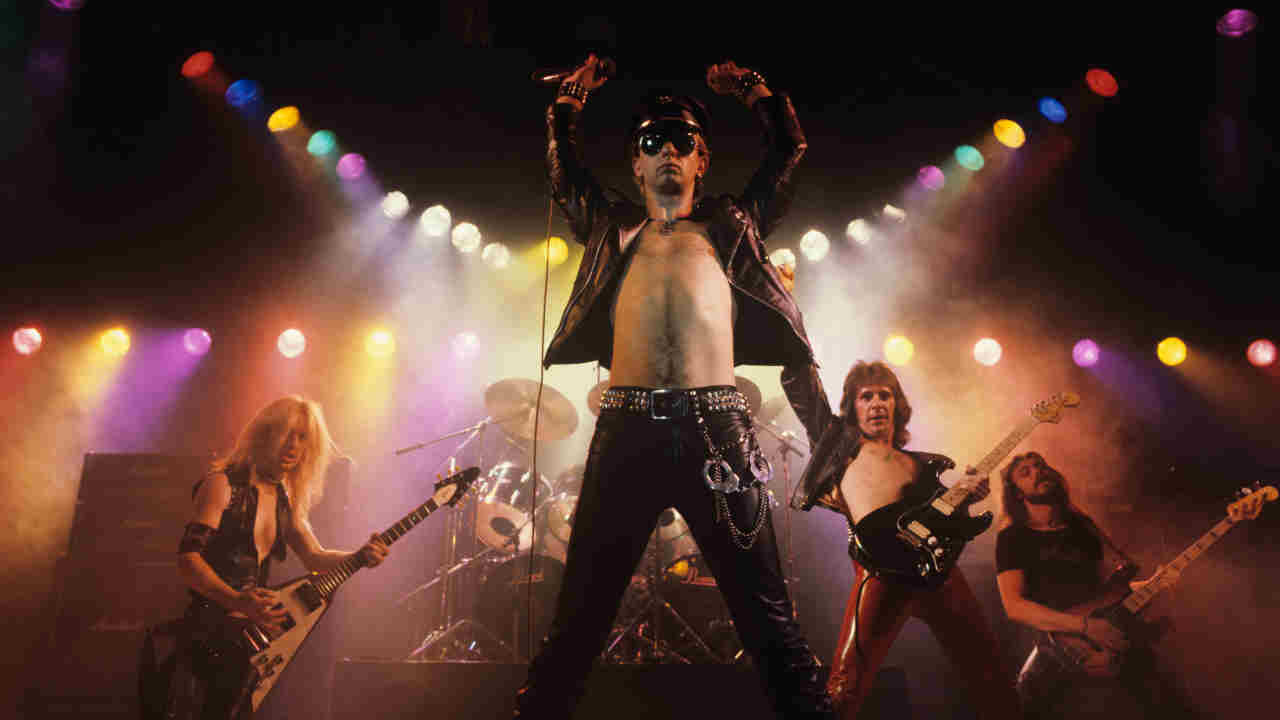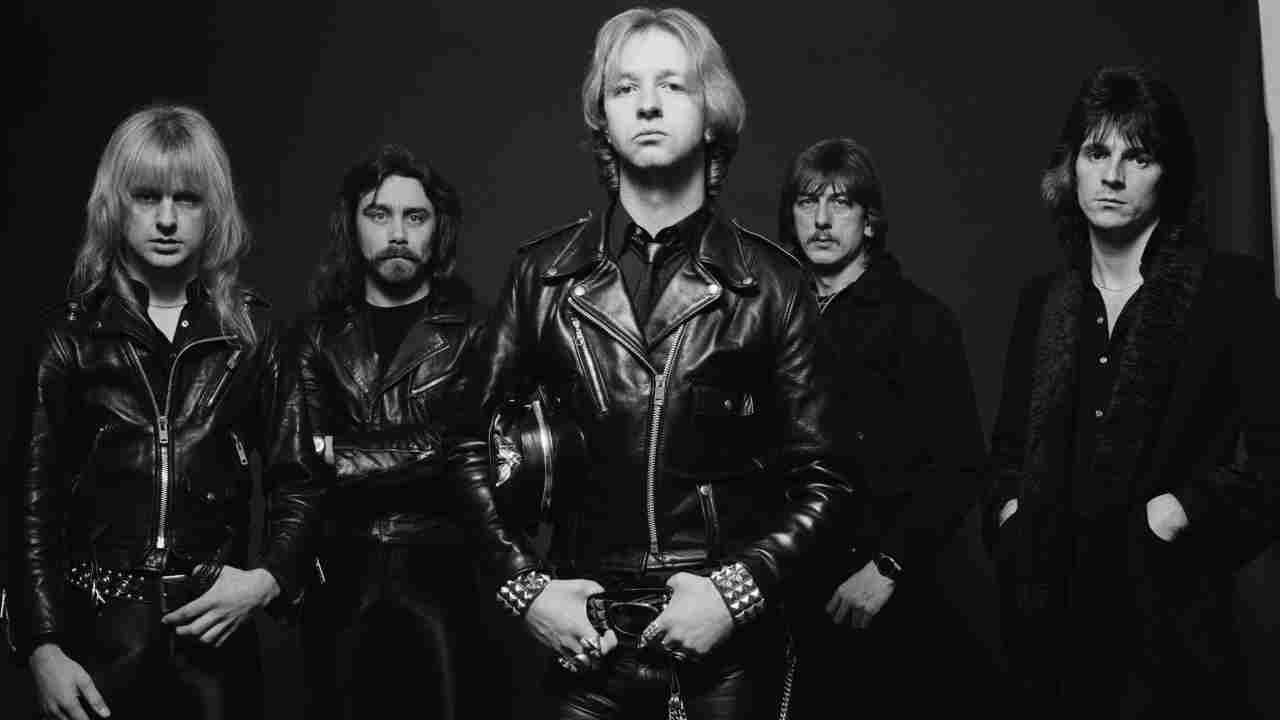Stolen tapes. Smashed milk bottles. Flying cutlery. Police cars. They all played a part in the story of how Judas Priest’s British Steel became one of the most significant UK metal albums of all time. In 2020, Metal Hammer spoke to Priest singer Rob Halford, guitarist Glenn Tipton and ex-guitarist KK Downing, plus producer Tom Allom, to celebrate the 40th anniversary of an album whose impact can still be felt today.

By the time Judas Priest recorded British Steel in early 1980, they had already released five studio albums and one live record, and were steadily building momentum. Previous studio LP Killing Machine, released in 1978, had peaked at No.32 in the UK and became the band’s highest-charting record in the US where (under the title Hell Bent For Leather) it reached No.128. The following year, live album Unleashed In The East ramped things up commercially, as it hit No.10 in Britain and No.70 in the States. Judas Priest were poised for a major breakthrough.
The band (vocalist Rob Halford, guitarists Glenn Tipton and K.K. Downing, bassist Ian Hill and new drummer Dave Holland, who had replaced Les Binks) convened with producer Tom Allom at Startling Studios. It was based at Tittenhurst Park, a 72-acre estate in Ascot, Berkshire, and had once been owned by former Beatle John Lennon but now belonged to his ex-bandmate Ringo Starr. Given how important this album would prove to be, it’s astonishing that Priest hadn’t finished writing the songs when they went in.
Glenn Tipton: “I can’t remember why we chose to do it this way. We had never done that in the past, and never worked like that again. We had about 60% of the songs written and ready to go. I know The Rage was written in the studio, and so was Living After Midnight.”

K.K. Downing: “We were always confident that we would get the stuff written in time, and sometimes being spontaneous like this can work to your advantage.”
Tom Allom: “I recall that they had a lot of ideas and riffs, but not many songs actually ready. The band had been constantly touring, so never had the time to get the material written. There was also no time for any pre-production. I had only just finished producing Def Leppard’s first album, On Through The Night, at the same studio, so pretty much went straight back in there with Priest.”
K.K. Downing: “[Ringo] wasn’t there at the time. But he took all the valuables out, and also set down rules for us to follow. There was to be no riding of motorbikes on the grounds – so we did that. There was also to be no fishing in the lake – so we did that as well! What do you expect from a Brummie heavy metal band? He also had two papier-mâché dinosaurs hidden in the grounds – they were massive. And when you came back pissed from the pub up the road, they could really scare you!”

Work started on February 1, 1980, and was completed by the end of that month. This was the first studio album Priest did with Tom Allom, although he had been at the helm for Unleashed In The East. He then collaborated with the band on their next five studio albums and one live release across the 80s (and subsequently returned to co-produce 2018’s Firepower). The band recorded in various rooms throughout the house, not just in the studio, experimenting to get the best sound for each instrument.
K.K. Downing: “Tom was great. He was an excellent musician as well – a much better piano player than any of us. He also came up with a lot of ideas. He was a great addition to the team.”
Tom Allom: “Everyone wanted a really live sound for the album. So, it made sense to use rooms all over the house to get the right ambience for each instrument. I know we got Dave a massive drum sound in the hallway. I would probably have gone down the same route with Leppard, but because they were so young and inexperienced it was important to have everything in a more controlled environment. But Priest were older and used to going into studios, so we could spread ourselves out more. Besides, the band already knew the layout at Tittenhurst Park, because that’s where we’d mixed Unleashed In The East.”
K.K. Downing: “You know the famous room at Tittenhurst Park where John Lennon did the video for Woman? We took out the TV and pool table that were in there and used it to rehearse. I did my guitar parts in the library. We used any place available to get the best possible sounds.”

The band put a lot of imagination into creating particular sounds on the album, using cutlery, milk bottles and a billiard cue. They even used a kettle to mimic an effect, all in the unholy name of metal. In the 1980s, bands had to get creative, because the advantages offered by modern technology were still in the realms of science fantasy… and none of them knew Doctor Who well enough to blag a trip in the TARDIS.
Tom Allom: “There were no such thing as samples in those days. So bands had to be a lot more inventive. I often feel sorry for young musicians now, because they’ve got everything at their fingertips. That’s the sort of thing that can stunt creativity.”
Glenn Tipton: “What we did for Metal Gods was load up a drawer with cutlery. Then we shook it, and took out spoons and knives until we got it just right. It was trial and error, but worth it in the end. Breaking The Law features the sound of milk bottles. We just got a load of them, smashed them on the ground and recorded these. It had the desired impact. But the sound of the sirens on that track is real. We went outside and recorded a passing police car – or at least that’s my recollection of events!”
K.K. Downing: “We’d come up with crazy ideas in those days. And who wouldn’t want to join in with smashing bottles at the back of the house? It was fun. We even tried stuff like putting light bulbs in the microwave, to hear if the noises they made when heated up could be used somewhere. Anything was possible; nothing was off limits.”
Tom Allom: “We wanted to get the sound of a laser beam cutting through at one point [for Rapid Fire]. So, we got a billiard cue and waved it through the air, with microphones above and below. And then I recall we slowed the tape down, to get the sound you hear on the track. And you know the cowbell on Breaking The Law? We used a kettle to get that sound. It was so badly beaten up that I doubt it was ever boiled again!”
Prior to the release, a story appeared in the media claiming that the master tapes for the album had been stolen by a gang in New York (where it was being mastered) and held to ransom for £50,000. This was all nonsense and had been dreamt up by Tony Brainsby, Priest’s publicist at the time, who was infamous for concocting wild tales to get his clients attention. It didn’t go down at all well with Priest, but it certainly worked, as the band received coverage in the sort of national papers who would usually ignore them.
K.K. Downing: “If we’d have got wind of what Tony was planning, then we’d have told him not to do it. Judas Priest don’t need such cheap publicity. Our music is what makes us stand or fall. Not cheap shots like this.”

British Steel was released by Columbia in April 1980, and lived up to expectations on every level. Rolling Stone magazine said at the time: ‘It rocks with a classic heavy metal vengeance, fuelled by the machine-gun rhythms and crackling guitar attack of punk offspring like the Ramones and The Damned. The result is a collection of killer cuts.’ The album stormed to No.4 in the British chart – still their highest position – and smashed through to No.34 in the US. Despite British Steel’s success, the origin of the name was shrouded in mystery.
K.K. Downing: “My recollection is that we saw the cover artwork [done by Rosław Szaybo] before we had the title. It may have been Ian Hill who suggested the name and it could have also been the fact that Glenn used to work for the British Steel Corporation. But the idea of calling it British Steel definitely made sense.”
Tom Allom: “Who would have believed there would be so many definitive Priest songs on this one album? The whole recording process was very business-like, and looking back now it all went like a dream. We were under a little pressure, because the label wanted it out in April, so we had to have it wrapped up by the end of February. But there were no crises or fall-outs. We just got on with things.”
Glenn Tipton: “At the time, we knew it was good, just not how special it would turn out. You just don’t realise when you’re in the middle of the process what you have is a classic. Only later on, when everyone tells you… that’s when it really hits home.”

There were three hit singles from the album in the UK. Both Breaking The Law and Living After Midnight reached No.12, while United peaked at 26. The videos for the first two were directed by Julien Temple, who says of the band: “There is a definite comedic element to Judas Priest, as I’m sure they know. We had a lot of fun doing these shoots”.
By the time British Steel was released, Priest had just completed 21 dates in Britain supported by Iron Maiden – one of the all-time great metal tours. They subsequently went to the US, playing a successful mix of headline and support dates. Priest were also second on the bill at the inaugural Monsters Of Rock festival at Donington in August 1980 (headlined by Rainbow), with the final show of the world tour happening on August 23 at the Golden Summernight festival in Nuremberg, Germany.
There were a whole raft of classic albums put out that year, including releases from Black Sabbath, Iron Maiden, Saxon, Ozzy, Motörhead and AC/DC. And British Steel is among the finest. So, how do the band rate it?
Rob Halford: “It’s right up with our best. I think with every great album, there’s a timeless feel. You listen to the first Sabbath album, Led Zeppelin II or any of the wonderful Pink Floyd records and they don’t just belong to an era. If I had a time machine right now, I could take British Steel back or forwards, play it to people and they would feel it belonged to them. That’s the reason so many big names in metal say they were influenced by it. I think this is where we found our direction. Up until that point, although we’d done well, there was a feeling in the band that we really didn’t have a proper focus.”
K.K. Downing: “For me, it’s the most important album we ever did. Everything came together so well. We were all in a great frame of mind, and the results were as good as everyone hoped. It elevated the band to the next level and finally put us on the path to where we wanted to be. We not only found our sound, but also our image with the leather and studs. I also believe that with British Steel we opened up a new era for heavy metal in general. Bands like Iron Maiden and Saxon, who supported us at various stages on the 1980 tour, went on to be very successful in their own right and benefited from what we did on this album. It was an exciting time, and British Steel really was the start of it all.”
Originally published in Metal Hammer issue 334, March 2020


